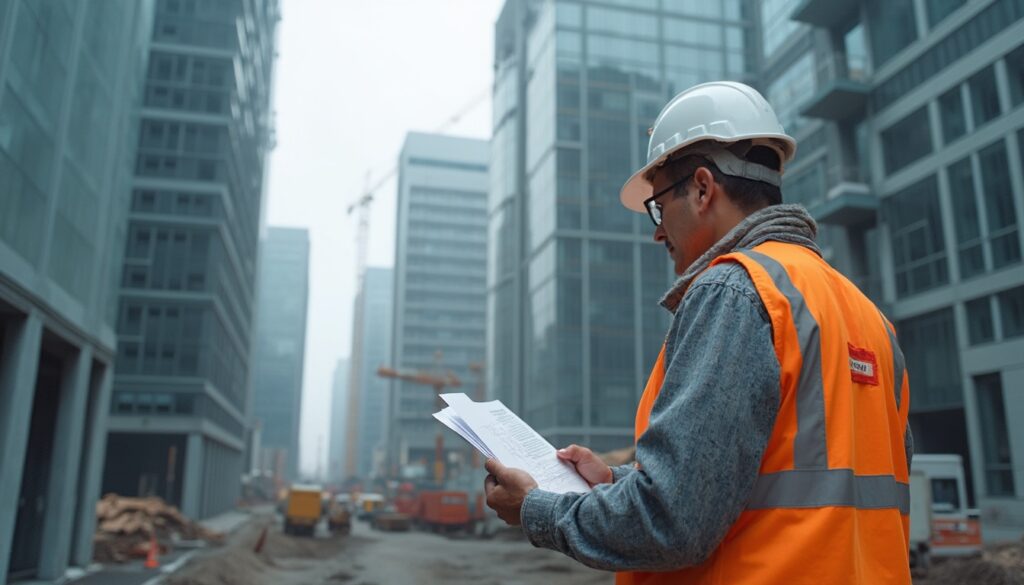The Foundation: Correctly categorizing types of amendments according to § 2 VOB/B
Successful amendment management begins with understanding the legal foundations in § 2 VOB/B. Any deviation from the original contract must be properly categorized to secure the entitlement to remuneration. Already over 70% of all construction projects have amendments that need to be processed correctly.
The VOB/B primarily distinguishes three cases for additional remuneration:
- Changed services (§ 2 Abs. 5 VOB/B): If the client changes the construction design, a new price must be negotiated based on the original calculation.
- Additional services (§ 2 Abs. 6 VOB/B): For services not included in the contract, the contractor must announce a claim for remuneration before execution.
- Services without an order (§ 2 Abs. 8 VOB/B): If the contractor performs a service without an order, it will only be compensated if it was necessary for fulfilling the contract and the client subsequently approves it.
Without a written notice before execution, contractors lose their entitlement to remuneration for additional services in over 50% of cases. A complete documentation, as enabled by a digital construction site documentation , is therefore essential. This precise categorization is the first step to avoid financial disadvantages and delays in the construction process.
Enforcing claims: Formulating the legally secure amendment offer
A formally correct amendment offer is the central tool for enforcing your claims. It must be 100% understandable for the client why additional remuneration is necessary. In practice, incomplete or unclear offers are rejected in over 60% of cases or lead to reductions.
A verifiable amendment offer must include at least the following five points:
- An exact description of the changed or additional service.
- A clear justification for the necessity of the amendment with reference to the order or circumstances.
- The relation to the main contract and the distinction from the already agreed services.
- A transparent and detailed calculation of the additional or reduced costs based on the original pricing basis.
- Information on possible impacts on execution deadlines and the construction schedule.
The calculation must retain the pricing basis of the main contract to be considered verifiable. A clean quantity determination according to VOB is the foundation for this. The submission should always be made in writing before starting the execution of the service to avoid jeopardizing the claim.
Managing defects: Rights and obligations in defect management according to § 13 VOB/B
Defect management according to VOB/B is as critical as handling amendments. The decisive legal basis for this is § 13 VOB/B, which regulates defect claims. A defect exists if the performance deviates from the agreed quality or does not meet recognized technical standards.
Even during construction, the contractor is obligated to point out concerns if, for example, the planning is faulty (§ 4 Abs. 3 VOB/B). After acceptance, the limitation period for defect claims begins, which typically lasts 4 years. A formal defect complaint from the client must describe the defect precisely and set a deadline for rework.
A professional digital defect management helps to document every step from detection to release completely. This reduces the average processing time per defect by up to 40%. Thus, deadlines are met and warranty claims are clearly regulated for both parties.
Avoiding typical cost traps through digital evidence securing
In the hustle and bustle of construction, mistakes quickly occur that later lead to significant costs. Over 80% of all disputes in construction can be traced back to inadequate or missing documentation. A digital recording of all processes closes this gap.
Here are 4 common mistakes and their digital solutions:
- Mistake 1: Oral agreements. A quick commitment from the client is not documented. Valoon instantly converts a simple voice input via WhatsApp into a documented occurrence with a timestamp.
- Mistake 2: Missing photo documentation. A defect is reported without meaningful images. With Valoon, photos are directly assigned to the correct occurrence, geo-referenced, and legally archived.
- Mistake 3: Delayed defect reporting. A defect report after acceptance is sent too late or incomplete. Valoon enables immediate creation and dispatch of a defect notice from the construction site in just 2 minutes.
- Mistake 4: Incomplete daily construction reports. Important events are forgotten. Valoon automatically generates the daily construction report from daily communication and ensures 100% completeness.
The automatic documentation reduces the administrative effort for construction managers by an average of 5 hours per week. This not only creates legal certainty but also frees up time for the actual management of the construction site.
Conclusion: With Valoon to an efficient and legally secure construction process
A professional Amendment and defect management according to VOB/B is not a bureaucratic evil but the key to economically successful construction projects. It protects against claims losses and minimizes the risk of protracted conflicts. The basis for this is a complete, timely, and traceable documentation of all processes.
Valoon makes this easier than ever before. By using WhatsApp as the input medium, there is no training requirement for the staff on site. Every message, every photo, and every document is automatically processed and structured in a legally secure manner. You benefit from three crucial advantages:
- Simplicity: Documentation directly via WhatsApp without a new app.
- Time savings: Reduction of administrative effort by up to 80%.
- Legal certainty: Comprehensive and VOB-compliant documentation for every occurrence, from the VOB acceptance to the amendment.
Turn communication chaos into evidence-based facts and focus again on what matters: building. Secure your claims and the profitability of your projects. Book your free demo now and experience how simple digital construction documentation can be.
More Links
Administrative regulations on the internet offers an administrative regulation for the introduction of the procurement and contract regulations for construction services (VOB), likely Part B.
Die RWTH Aachen provides a document that deals with issues of construction or the VOB.
Der Authorities Mirror publishes an article on secure amendments to contracts according to VOB/B.
Das VDI Knowledge Forum offers training on VOB amendment and defect management.
Das Bavarian State Ministry for Housing, Construction and Transport provides the VOB/B 2012 as a PDF document.
Das Federal Ministry for Economic Affairs and Climate Action informs about the digitization index of the German economy.
Das Fraunhofer IESE offers a blog article on digitization in the construction industry based on a study.
Der Central Association of the German Construction Industry (ZDB) presents a position paper on digitization in the construction industry.
FAQ
How does Valoon specifically assist with amendment management according to VOB/B?
Valoon captures every communication, every photo, and every instruction on the construction site via WhatsApp. This information is automatically provided with timestamps and location data and compiled into a comprehensive daily construction report. This creates a verifiable basis for every amendment without requiring additional effort from the construction manager.
Is documentation via WhatsApp legally secure?
The sole use of WhatsApp is not legally secure, as messages can be manipulated or deleted. Valoon solves this problem by immediately and immutably storing the content on external servers in Germany. Thus, a simple message becomes a legally secure document that meets the requirements of VOB/B.
Do my employees on the construction site have to install a new app?
No, this is the key advantage of Valoon. Your employees continue to communicate as usual via WhatsApp. There is no installation, no training, and no adjustment required, which ensures 100% acceptance on the construction site.
What does it cost to use Valoon for employees on the construction site?
For employees on the construction site, using Valoon is completely free. Costs are only incurred for the licenses in the office that receive, manage, and analyze the data. This pricing model lowers the barrier to entry and promotes rapid implementation across the company.
How does a WhatsApp message become a defect protocol?
When an employee sends a defect via photo and text via WhatsApp to the project group, the Valoon system recognizes this. In the office, the project manager can convert this information into a formal defect notice according to VOB/B with a few clicks, set a deadline, and send it directly to the responsible subcontractor.
Does Valoon also support the documentation of time-and-material work?
Yes, hourly work or other time-and-material work can easily be reported via WhatsApp. The employee specifies how many hours were spent on which activity. Valoon processes this information and automatically generates verifiable time certificates that serve as the basis for billing.








